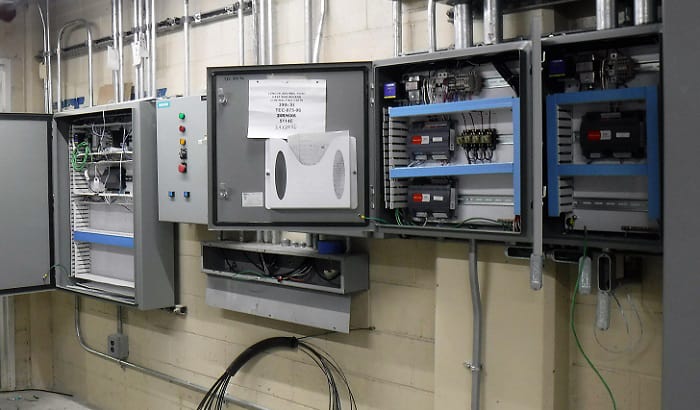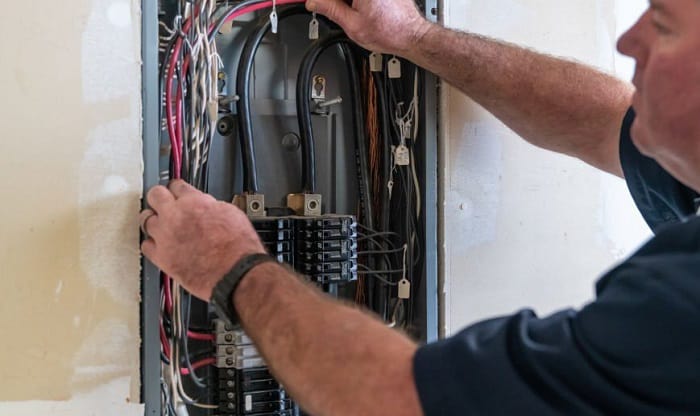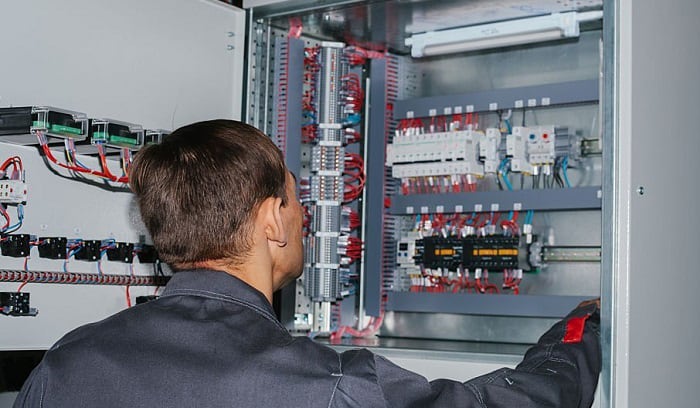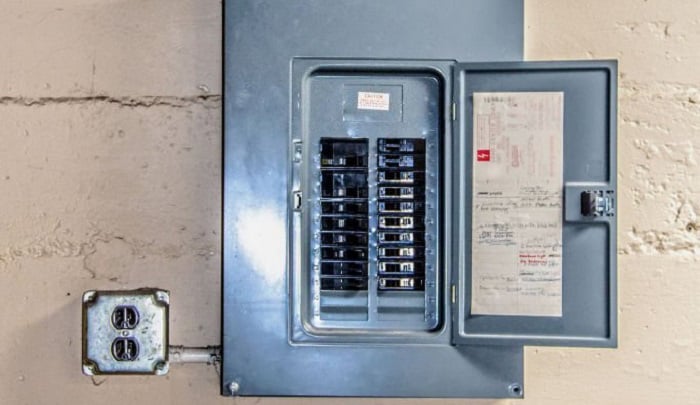Main breaker vs main lug talk usually revolves around when to use either one. That being said, always start by getting the definition of both right.
The main breaker acts as the primary overcurrent device that serves all branch circuits and controls all their respective breakers in the same panel. The main breaker panel that supplies electricity to an entire property often comes with its own main breaker.
Meanwhile, the main lug panel functions as add-on or sub panels, usually connected to the main breaker panel. Since it lacks overcurrent protection (unless converted), it often needs to be connected to the said panels or any overcurrent device.
Read on for a more complete comparison and to know the best times to use either one.
Table of Contents
- What is the Main Breaker?
- What is the Main Lug?
- Advantages and Disadvantages of Main Breaker and Main Lug
- The Main Factors that Make a Main Breaker Different From a Main Lug
- Can You Put a Main Breaker in a Main Lug Panel?
- What Does a Main Lug Do?
- Is There a Difference Between a Main Breaker and a Regular Breaker?
- Conclusion
What is the Main Breaker?
If you look at a typical main electrical service panel or load center, you’ll see an inordinately large breaker, usually positioned on top of all the other breakers. It protects all service entrance wires against overcurrents.
It comes with a single disconnect meant for all loads that the load center feeds, which is why it’s often used as the central switch to shut off or turn on (i.e. reset) an entire home’s power supply.
In the main breaker panelboard, expect all feeder wires to attach to a separate breaker. Each breaker supplies the panel’s bus.
How Does It Work
We call it the main breaker because it acts as the central supplier of electricity to all the different circuits of your property, and, in turn, all its rooms.
In main breaker load centers, you can shut down the power supply to your entire home or certain areas of it just by switching the main breaker from ‘On’ to ‘Off’.
You can reset it by turning it from ‘Off’ to ‘On’ twice and then finally leaving it in the ‘On’ position.
What is the Main Lug?
Plenty of electricians refer to it as the main lug sub panel. Don’t confuse it with the main breaker panel, just because it’s got “main” attached to it.
This panel’s characterized by the electrical lugs located on top of it – which is, incidentally, where the main breaker in a panel is often located.
The panel wiring and conductors in various circuits hook onto those lugs, like how feeder wires connect to a circuit breaker.
Of course, the primary difference is that there’s no overcurrent device here, which is why these panelboards are labeled as “main lugs only.”
If you do install a main breaker into the main lug panel, typically with the help of a breaker kit, it can serve as the main breaker box.
You won’t need to attach the wires to the lugs on the panels if this is the case, since they already need to connect to the breakers directly.
- For example, a 100 amp main lug panel may become the main breaker box if it’s a convertible and a 100-amp breaker was installed in it. This is undoubtedly what confuses most people about main lug vs main breaker.
- Always remember: You can convert main lug to main breaker, regardless of its brand, as long as the product allows it. You can freely do this with GE main lug to main breaker convertible or the ones made by Square D and Siemens.
How Does It Work
At best, many consider it as a load center electrical that supports the main panelboard, which is why it’s used as primarily a sub panel. Not surprisingly, I’ve had a handful of folks ask me, “When can I use a main lug only panel?”
As far as main lug vs sub panel is concerned, remember these similarities and distinctions:
- A sub panel can be any panel that aids the main breaker panel.
- The main lug panel stands out because it lacks a main breaker or any circuit breaker, for that matter.
- Other sub panels have their own breakers without, of course, a main breaker.
Overall, since it’s not much different from your average subpanel, the main lug may be used to lighten the load of the main panel, meet growing electrical needs, or extend or tap your wires to areas that weren’t optimally supplied or not supplied at all before.
The electrical code requires overcurrent protection for all panelboards, whether it’s provided by the main breaker panel or, as I’ve mentioned, by another disconnect switch (e.g. an upstream breaker that may be in another sub panel).
Advantages and Disadvantages of Main Breaker and Main Lug
Main breakers are nothing short of necessary in most electrical systems, as are main lugs, especially when meeting specific requirements.
Pros
- The main lug load center holds many circuit breakers in your home and is responsible for the safe and optimal distribution of electricity on any property.
- Main breaker panels are reliable at safeguarding your property from both overcurrents and overloads.
- Main lugs only load centers may deliver all the benefits of a typical sub panel, especially the perk of being able to add more circuits, minus overcurrent protection.
- Both are necessary to expand your property’s circuits if the need arises.
Cons
- The main breaker only provides overcurrent protection and may not include protection for short circuits.
- Many main panels and sub panels are prone to problems such as double tapped main lugs. It’s when you tap two wires to a single lug, which is not only illegal but will likely lead to overloading and plenty of nuisance trips. Unless the panel explicitly allows it, you should refrain from doing it.
The Main Factors that Make a Main Breaker Different From a Main Lug
Here’s what sets these two apart:
- The main breaker provides overcurrent protection and control over your property’s major circuits. The main lug doesn’t do that but instead acts as a sub panel that helps to distribute electricity and increase the number of circuits.
- You hook your conductors directly to the lugs in a main lugs-only panel. On the main breaker load center, you attach the wires to the breakers’ own lugs.
Can You Put a Main Breaker in a Main Lug Panel?
Yes, as long as the latter’s purposely designed as a convertible MLO panel by its manufacturer. You need to use its brand and model number as a reference to know whether you can put a main breaker in a main lug panel (i.e. convert it).
What Does a Main Lug Do?
It acts as a sub panel where you can immediately hook your wires to help distribute electricity more optimally in your home or help overcome challenges such as when you run out of circuit slots in your main electrical panel.
Is There a Difference Between a Main Breaker and a Regular Breaker?
Technically, there’s not much difference in protecting function and installation. However, we can see subtle standout qualities for the former.
For one, its large size connotes the bigger amperage loads it can handle. It may also turn off a property’s power supply, unlike branch breakers that can only shut off power to the circuits they serve.
Conclusion
At best, the main breaker vs main lug comparison isn’t so much a battle as it is a showcase of how either one delivers value to your property’s electrical network.
In the end, both complement each other, since one functions as a protective solution that imparts control and convenience, while the other makes sure the former does its job properly and ensures close-to-flawless electrical distribution.

I am Edwin Jones, in charge of designing content for Galvinpower. I aspire to use my experiences in marketing to create reliable and necessary information to help our readers. It has been fun to work with Andrew and apply his incredible knowledge to our content.




